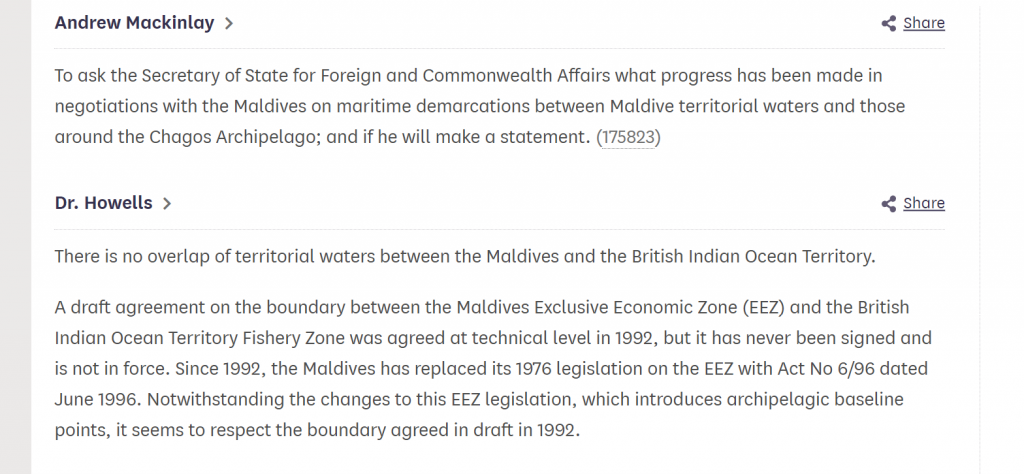Saturday
3rd Jan 2026
Dhivehi Edition

The president of Maldives with his cabinet ministers in last night's press, President's Office
In light of the recent International Tribunal for the Law of the Sea (ITLOS) decision regarding the maritime boundary dispute between the Maldives and Mauritius, the Maldivian government claims that the country never had a 200-nautical-mile (nm) Exclusive Economic Zone (EEZ) to begin with, and that the ruling resulted in Maldives gaining new EEZ territory rather than losing it. This article aims to fact-check these claims.
First, it is important to understand the differences between the two types of maritime areas: the territorial sea and the EEZ. The territorial sea is considered part of the country, and the nation exercises sovereign power over it. In contrast, the EEZ is not part of the country, and the state only holds sovereign rights within this zone.
Contrary to the government's claims, the Maldives Maritime Territory Law clearly states that the country has a 200 nm EEZ in all areas. According to the law, the Maldives can only relinquish part of this territory by entering into an agreement with another state. There is no such agreement regarding the southern EEZ.
In 2008, former State Secretary of Foreign and Commonwealth Affairs, Dr. Kim Howells, confirmed that the Maldives had an EEZ in the south, which had been agreed upon with the British, who controlled the Chagos Archipelago at the time. Dr. Howells also stated that the Maldives had respected the borders drawn in that agreement, even after the 1996 Law of Maritime Territory came into effect.

Dr.Howells further clarified, that there was no overlapping territorial waters between the Maldives and the Chagos.
The overlapping area between the Maldives and Chagos did not exist until Mauritius claimed an extended 200 nm EEZ, resulting in an overlapping area of 96,000 square kilometers. Therefore, based on this information, the Maldives did have an EEZ, and the ITLOS decision indeed resulted in the loss of a large portion of that territory.
